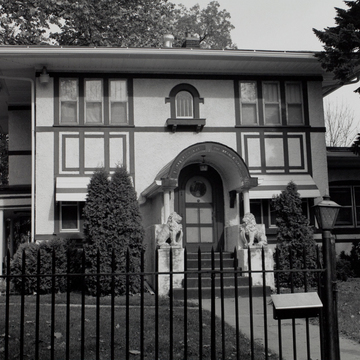The Prairie mode seemingly derived from Viennese Secessionism of the early 1900s was utilized in the Ortner house. Here, a lightly placed, dramatically projected hipped roof lies gently atop a stucco box whose facade is busily articulated by a geometric pattern of windows and half-timbering. The central
You are here
Ortner House
c. 1915, Mortimer B. Cleveland. 131 Prospect Ave.
If SAH Archipedia has been useful to you, please consider supporting it.
SAH Archipedia tells the story of the United States through its buildings, landscapes, and cities. This freely available resource empowers the public with authoritative knowledge that deepens their understanding and appreciation of the built environment. But the Society of Architectural Historians, which created SAH Archipedia with University of Virginia Press, needs your support to maintain the high-caliber research, writing, photography, cartography, editing, design, and programming that make SAH Archipedia a trusted online resource available to all who value the history of place, heritage tourism, and learning.












